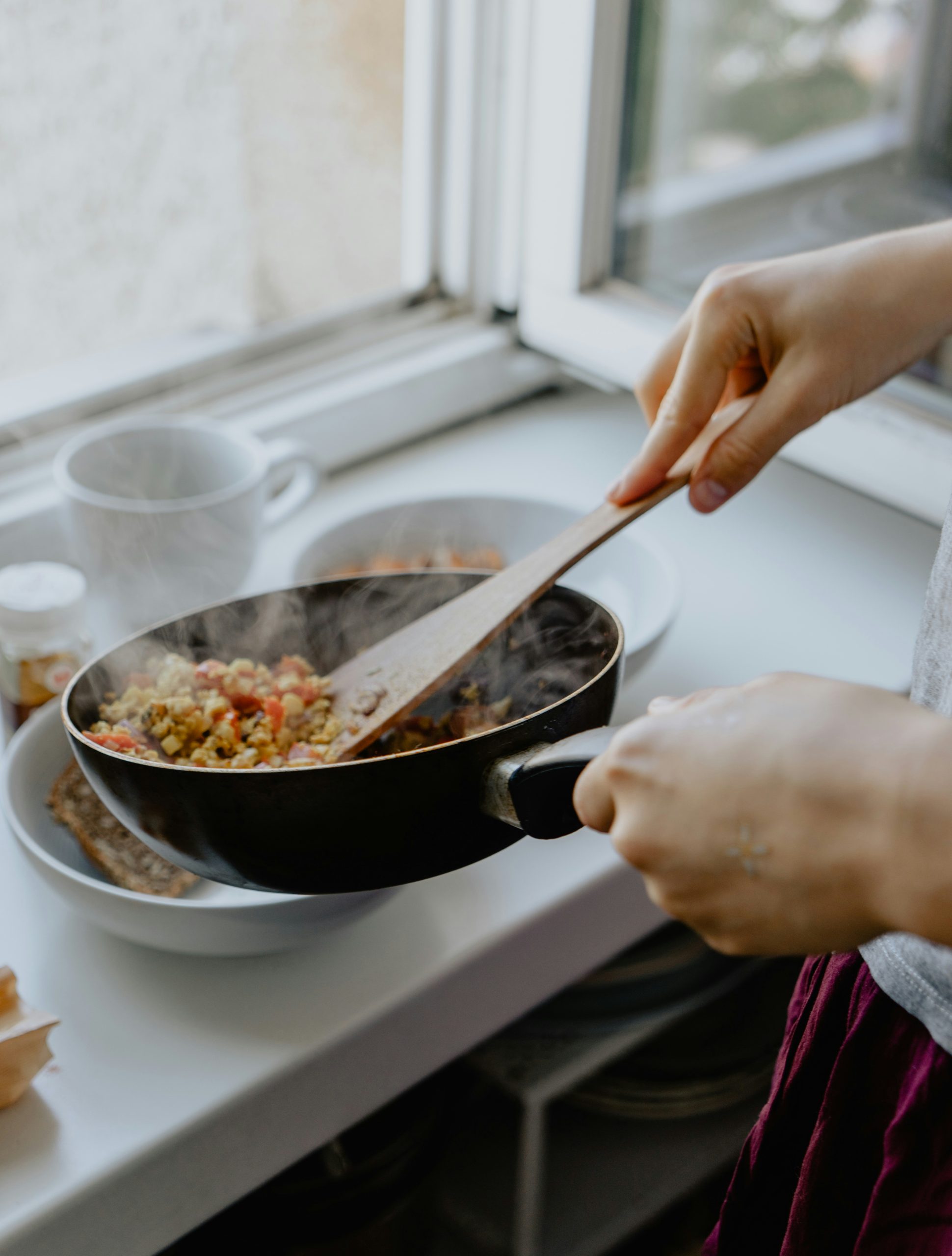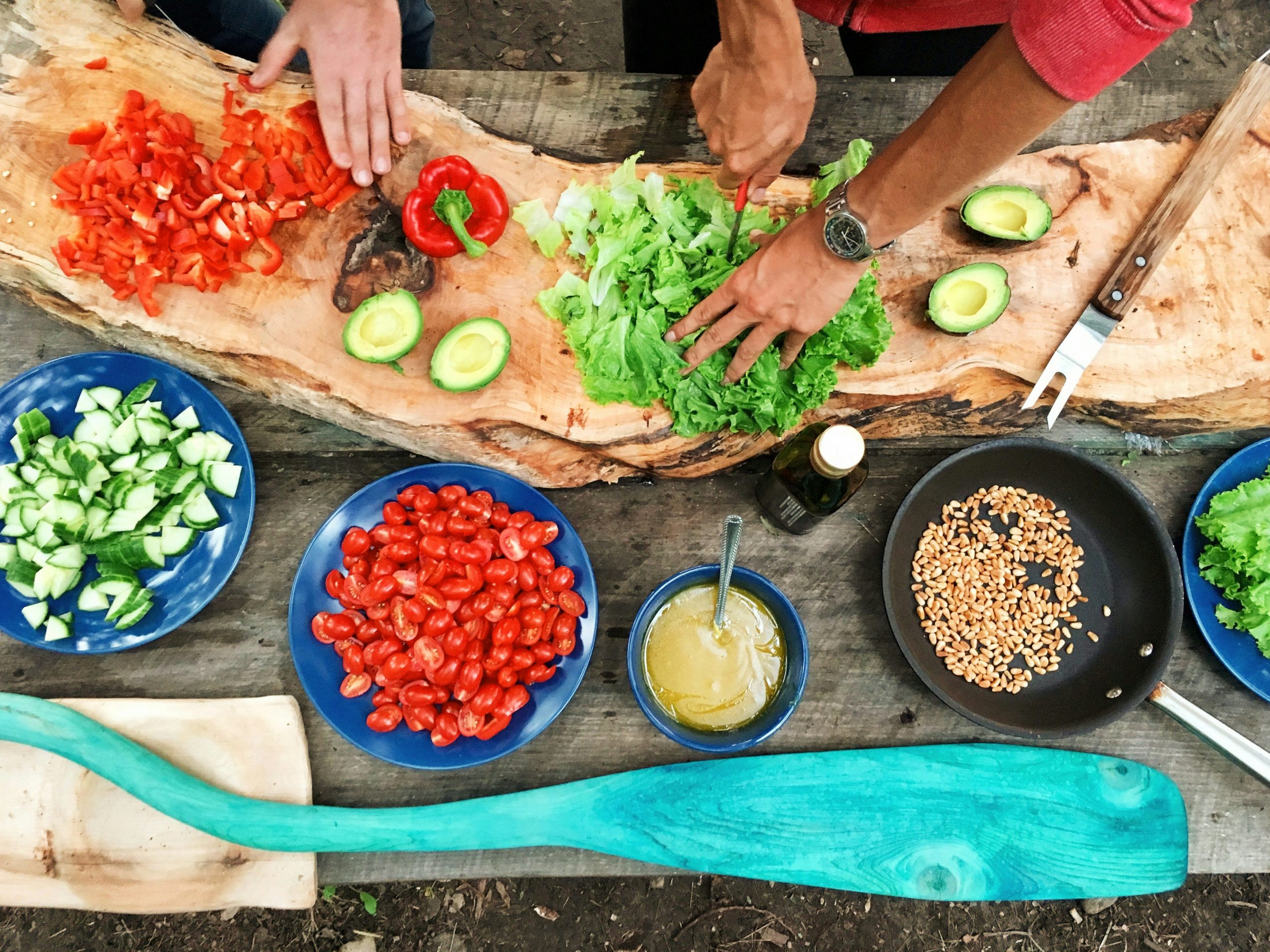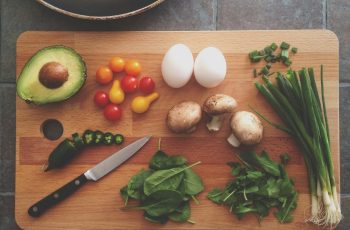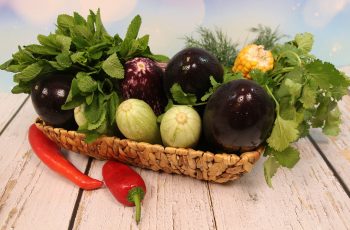Ad Blocker Detected
Our website is made possible by displaying online advertisements to our visitors. Please consider supporting us by disabling your ad blocker.
Did you ever wonder how pressure cooking works? Well, let me enlighten you on the science behind pressure cooking in stainless steel. This popular cooking technique involves the use of a sealed pot and high-pressure steam, which creates an environment where food cooks faster and flavors are intensified. But what makes stainless steel the ideal material for pressure cooking? Its unique properties allow for even heat distribution, durability, and resistance to corrosion, making it the perfect choice for this high-temperature cooking method. So, let’s uncover the fascinating science that makes pressure cooking in stainless steel so efficient and effective.

Understanding Pressure Cooking
Pressure cooking is a cooking technique that has been gaining popularity due to its efficiency and ability to cook various ingredients quickly. It involves cooking food in a sealed pot, allowing the pressure inside to rise, which increases the boiling point of water and speeds up the cooking process. By understanding the science behind pressure cooking, you can fully appreciate its benefits and make the most out of your stainless steel pressure cooker.
How pressure cooking works
In a pressure cooker, when the heat is applied, the liquid inside the pot begins to boil. Unlike traditional cooking methods, the steam created during boiling is unable to escape due to the airtight seal of the cooker. As steam continues to build up, it raises the pressure inside the cooker, which increases the boiling point of the liquid. This, in turn, allows the food to cook at higher temperatures and reduces cooking time significantly.
Benefits of pressure cooking
There are several benefits to pressure cooking, making it an attractive option for many home cooks. First and foremost, pressure cooking is a time-saver. With the increased pressure and temperature inside the cooker, food cooks faster compared to traditional methods. This can be particularly advantageous when preparing dishes that typically require long cooking times, such as stews, roasts, or dried legumes.
Another key benefit of pressure cooking lies in its ability to retain nutrients. Since the cooking time is reduced, fewer nutrients are lost during the process, resulting in healthier meals. Furthermore, pressure cooking helps to preserve the taste, color, and texture of the ingredients, ensuring that your meals are flavorful and visually appealing.
Lastly, pressure cooking is energy-efficient. The higher pressure and temperature mean that less heat is required to cook the food. This not only saves time but also reduces energy consumption, making pressure cooking a more environmentally friendly option.
Properties of Stainless Steel
Before diving into the science behind pressure cooking, it is important to understand the properties of stainless steel. Stainless steel is a versatile and durable material commonly used in the manufacturing of cookware. It is primarily composed of iron, with the addition of chromium and other alloys, which give it its signature resistance to corrosion.
Overview of stainless steel
Stainless steel is highly regarded in the cooking industry for its durability, resistance to staining, and ease of maintenance. It is a non-reactive material, meaning it does not leach any harmful substances into the food during cooking. Additionally, stainless steel is known for its ability to distribute heat evenly, preventing hot spots and ensuring that food cooks uniformly.
Why stainless steel is used in cooking
Stainless steel has numerous qualities that make it a preferred material for cookware. Its resistance to corrosion and staining makes it ideal for cooking acidic or alkaline foods, as well as for cooking with high heat. Stainless steel also provides a level of protection against bacterial growth, making it safe for food preparation.
Furthermore, stainless steel is non-porous, meaning it does not absorb flavors or odors from the food. This characteristic makes it great for cooking a variety of dishes without worrying about residual flavors affecting the taste of the next meal.
Advantages of stainless steel in pressure cooking
When it comes to pressure cooking, stainless steel brings several advantages to the table. Firstly, the durability of stainless steel cookware ensures that it can withstand the higher pressures and temperatures experienced during pressure cooking. Unlike other materials, such as non-stick coatings, stainless steel does not degrade with prolonged exposure to high heat and pressure.
Additionally, stainless steel’s ability to distribute heat evenly is beneficial in pressure cooking. This ensures that the food is cooked consistently and reduces the likelihood of unevenly cooked or scorched spots. Stainless steel cookware also retains heat well, allowing for more precise control over the cooking process.
Heat Transfer in Stainless Steel
Understanding how heat is transferred in stainless steel is crucial for optimizing the cooking process. Heat transfer refers to the movement of thermal energy from a hotter area to a colder one. In the context of stainless steel cookware, there are primarily two modes of heat transfer: conduction and convection.
Conduction in stainless steel
Conduction is the method by which heat is directly transferred from a heat source to the cookware. In the case of stainless steel, heat energy is conducted through the metal from the heat source and into the food. Stainless steel’s high thermal conductivity ensures that heat spreads quickly and evenly throughout the cookware, resulting in uniform cooking.
Factors affecting heat transfer
Several factors can affect the heat transfer in stainless steel cookware. The thickness of the stainless steel pot plays a significant role in how heat is conducted. Thicker pots will take longer to heat up but will retain heat better, providing a more consistent cooking environment. Conversely, thinner pots will heat up faster but may result in uneven cooking due to rapid heat loss.
Another factor that influences heat transfer is the presence of a conductive base in the cookware. Many stainless steel pressure cookers have a layered base that includes materials with higher heat conductivity, such as aluminum or copper. This design allows for even faster and more efficient heat transfer, reducing cooking times further.
Comparison with other materials
When comparing heat transfer in stainless steel cookware to other materials, such as aluminum or cast iron, it is important to consider the specific characteristics of each material. While aluminum is an excellent conductor of heat, it may react with certain acidic foods, resulting in a metallic taste. Cast iron, on the other hand, retains heat exceptionally well but is prone to rust if not properly maintained.
Stainless steel strikes a balance between heat conductivity, durability, and non-reactivity, making it an ideal choice for pressure cooking. Its ability to evenly distribute heat, coupled with its resistance to corrosion and staining, ensures optimal cooking results.
Pressure and Temperature Relationship
Pressure and temperature are closely linked in the world of pressure cooking. As the pressure inside the pressure cooker increases, so does the boiling point of the liquid inside. Understanding the relationship between pressure and temperature is vital for achieving the best results when using a stainless steel pressure cooker.
Understanding the relationship
At sea level, water boils at a temperature of 100 degrees Celsius (212 degrees Fahrenheit) under normal atmospheric pressure. However, as the pressure increases, the boiling point of water also rises. This is why pressure cooking can significantly reduce the cooking time for various dishes.
A stainless steel pressure cooker allows you to increase the pressure inside the pot, which, in turn, increases the boiling point of water beyond 100 degrees Celsius. This higher temperature allows the food to cook faster, ensuring efficient and time-saving meal preparation.
The effect of pressure on boiling point
The increase in pressure inside the pressure cooker affects the boiling point by raising it above the normal boiling point of water. For example, at a pressure of 1 bar or 15 pounds per square inch (psi), the boiling point of water increases to approximately 121 degrees Celsius (250 degrees Fahrenheit).
By increasing the pressure further, the boiling point can be raised even higher. For every additional 15 psi of pressure, the boiling point of water increases by approximately 5 degrees Celsius (9 degrees Fahrenheit). This means that a stainless steel pressure cooker operating at 30 psi would have a boiling point of around 138 degrees Celsius (280 degrees Fahrenheit).

How stainless steel handles high pressures
While stainless steel is an excellent material for pressure cooking, it is essential to ensure that the cookware can withstand the high pressures involved. High-quality stainless steel pressure cookers are designed with reinforced lids and locking systems to safely contain the increased pressure.
Stainless steel’s inherent strength and durability make it an ideal choice for pressure cookers. It can withstand the high pressures without warping or compromising the integrity of the pot. Stainless steel pressure cookers are built to provide a safe and reliable cooking experience, allowing you to take full advantage of the pressure cooking benefits.
Cooking Performance
One of the significant advantages of using stainless steel pressure cookers is their impact on cooking performance. Stainless steel cookware, when combined with the pressure cooking technique, delivers consistent and accelerated cooking results, making it an excellent choice for home chefs.
Impact of stainless steel on cooking time
The combination of stainless steel and pressure cooking results in significantly reduced cooking times compared to conventional methods. The increased heat and pressure inside the cooker ensure that food cooks faster and more efficiently. For example, a tough cut of meat that would typically require hours of slow cooking can be tenderized and cooked to perfection in a fraction of the time with a stainless steel pressure cooker.
Retaining nutrients in pressure cooking
Pressure cooking in stainless steel also helps to retain the nutritional value of the food being cooked. The shorter cooking times and reduced exposure to heat minimize the loss of essential vitamins, minerals, and other nutrients that can be compromised through prolonged cooking. This makes pressure cooking an excellent choice for health-conscious individuals who want to enjoy nutrient-rich meals.
Consistency and even cooking
Stainless steel’s ability to distribute heat evenly ensures that the food is cooked consistently throughout. Pressure cooking further enhances this, as the additional pressure ensures that heat penetrates the food quickly and uniformly. This eliminates the risk of undercooked or overcooked areas in your dishes, guaranteeing a consistently delicious outcome.
Durability and Safety
Stainless steel cookware, including pressure cookers, is known for its durability and safety features. Investing in quality stainless steel pressure cookers can provide a lifetime of cooking enjoyment while maintaining a high level of safety.
Longevity of stainless steel cookware
Stainless steel cookware is built to last. Its exceptional resistance to corrosion, staining, and wear and tear ensures that your pressure cooker will remain in excellent condition for years to come. Stainless steel’s durability allows it to withstand repeated use and exposure to high pressures and temperatures, making it a reliable choice for everyday cooking and special occasions.

Avoiding corrosion and rust
One of the primary advantages of stainless steel is its resistance to corrosion and rust. However, it is essential to follow proper care and maintenance guidelines to ensure the longevity of your stainless steel pressure cooker. Avoid using abrasive cleaning tools or harsh chemical cleaners that can scratch the surface of the cookware and compromise its resistance to corrosion. Additionally, proper drying after cleaning is crucial to prevent the formation of rust.
Safety features of pressure cookers
Stainless steel pressure cookers are equipped with various safety features to ensure your peace of mind while cooking under high pressure. The locking lid mechanism ensures that the pressure cooker remains sealed throughout the cooking process, preventing any accidents caused by steam leaks. Many pressure cookers also feature pressure release valves or indicators that allow excess steam to escape safely, reducing the risk of pressure buildup.
Modern stainless steel pressure cookers are designed with user safety in mind and undergo rigorous testing to meet industry standards. These safety features contribute to creating a secure and worry-free cooking experience.
Maintenance and Cleaning
Proper maintenance and cleaning of your stainless steel pressure cooker are essential for preserving its appearance and performance. By following a few simple steps, you can ensure that your cookware remains in excellent condition for years to come.
Cleaning tips for stainless steel
To clean your stainless steel pressure cooker, start by rinsing it in warm, soapy water to remove any food residue. Using a soft sponge or cloth, scrub the interior and exterior surfaces gently. Avoid using abrasive materials or harsh cleaners that can scratch or damage the stainless steel. Rinse the cooker thoroughly to remove any soap residue, and dry it with a soft, clean cloth.
Maintaining the shine and appearance
To maintain the shine and appearance of your stainless steel pressure cooker, consider polishing it periodically. Stainless steel cleaners or polishes specifically designed for cookware can help remove stains and restore the luster of your stainless steel. Be sure to follow the manufacturer’s instructions when using these products to avoid any damage to the stainless steel.
Dealing with stains and discoloration
Over time, stainless steel pressure cookers may develop stains or discoloration due to various factors. If you encounter stubborn stains, mix a paste of baking soda and water and apply it to the affected areas. Gently scrub the stains using a soft cloth or sponge, and rinse thoroughly. For more challenging stains, you can also try using vinegar or lemon juice, as their acidity can help break down the stains.
Cooking Tips and Techniques
To make the most out of your stainless steel pressure cooker, here are some cooking tips and techniques to keep in mind.
Optimal cooking techniques for stainless steel pressure cookers
When using a stainless steel pressure cooker, it is essential to follow the manufacturer’s instructions and recommended cooking techniques. Start by preheating the pressure cooker before adding the ingredients. This will help reduce cooking time further. Additionally, avoid overfilling the pressure cooker to prevent any blockages or safety hazards. Properly venting the cooker and using the recommended cooking times based on the recipe are also key to achieving delicious results.
Maximizing flavor extraction
To enhance the flavors of your pressure-cooked meals, consider browning the ingredients before pressure cooking. Many stainless steel pressure cookers allow you to do this by using the sauté function directly in the pot. Browning meat or aromatics before pressure cooking can help develop rich flavors and add depth to your dishes.
Using steam release methods effectively
Properly releasing the steam from your stainless steel pressure cooker is crucial for safety and achieving the desired cooking results. Always follow the manufacturer’s guidelines for releasing steam, as different pressure cookers may have different methods. Quick-release methods, such as using the pressure release valve or running cold water over the lid, can be used for foods that require less cooking time or delicate ingredients. Natural release methods, where the pressure is allowed to dissipate on its own, are typically used for foods that benefit from longer cooking times, such as soups or stews.
Choosing the Right Stainless Steel Pressure Cooker
When selecting a stainless steel pressure cooker, there are several factors to consider to ensure you find the best fit for your cooking needs.
Factors to consider when buying a pressure cooker
The capacity and size of the pressure cooker are essential considerations. Determine how many servings you typically cook and whether you require a smaller or larger pot. Additionally, consider the types of meals you plan to prepare in the pressure cooker and ensure that it can accommodate your preferred dishes.
Different sizes and capacities
Stainless steel pressure cookers come in various sizes and capacities, ranging from smaller models suitable for singles or couples to larger options great for families or entertaining guests. Determine your needs based on the number of servings you typically cook and the versatility you desire from your pressure cooker.
Features to look for
When shopping for a stainless steel pressure cooker, look for features that can enhance your cooking experience. Some desirable features include multiple pressure settings for added versatility, a locking lid system for safety, and a steamer basket for cooking vegetables or fish. Additionally, consider the ease of use, such as intuitive controls and convenient handles for added comfort and maneuverability.
Conclusion
In conclusion, understanding the science behind pressure cooking in stainless steel can revolutionize your cooking experience. By utilizing the unique properties of stainless steel, you can enjoy the benefits of pressure cooking, such as reduced cooking time, nutrient retention, and consistent cooking results. Stainless steel’s durability and safety features make it an excellent choice for pressure cookers, ensuring reliable performance and longevity. With proper care and maintenance, your stainless steel pressure cooker can continue to produce delicious meals for years to come. So, embrace the science, explore the possibilities, and enjoy the many benefits of pressure cooking in stainless steel.

